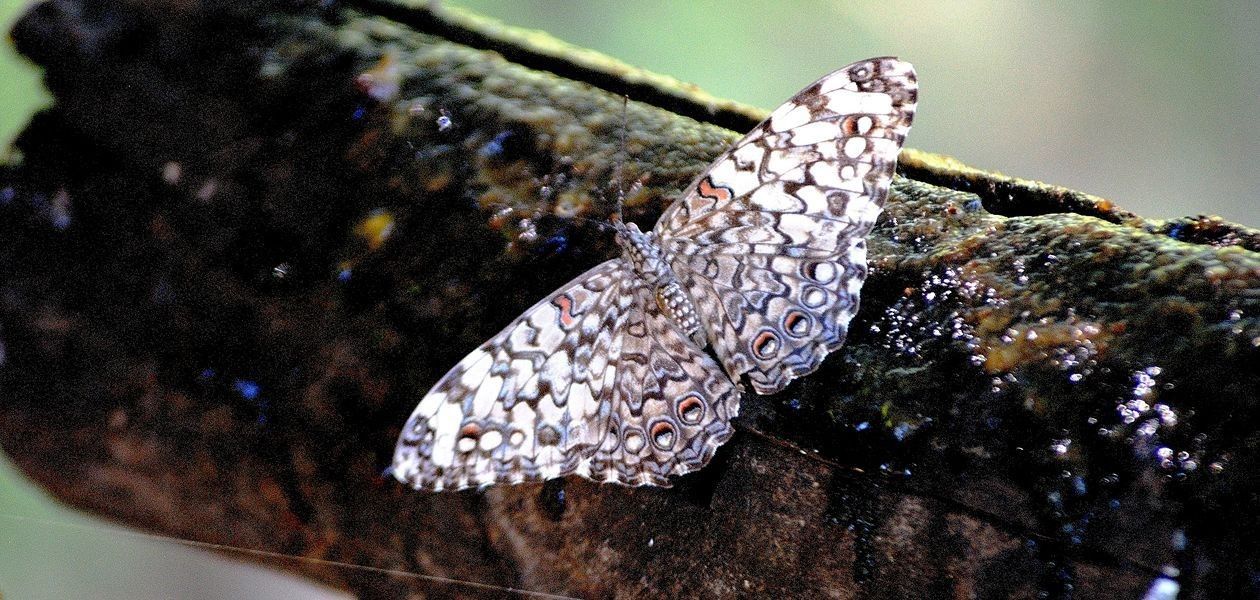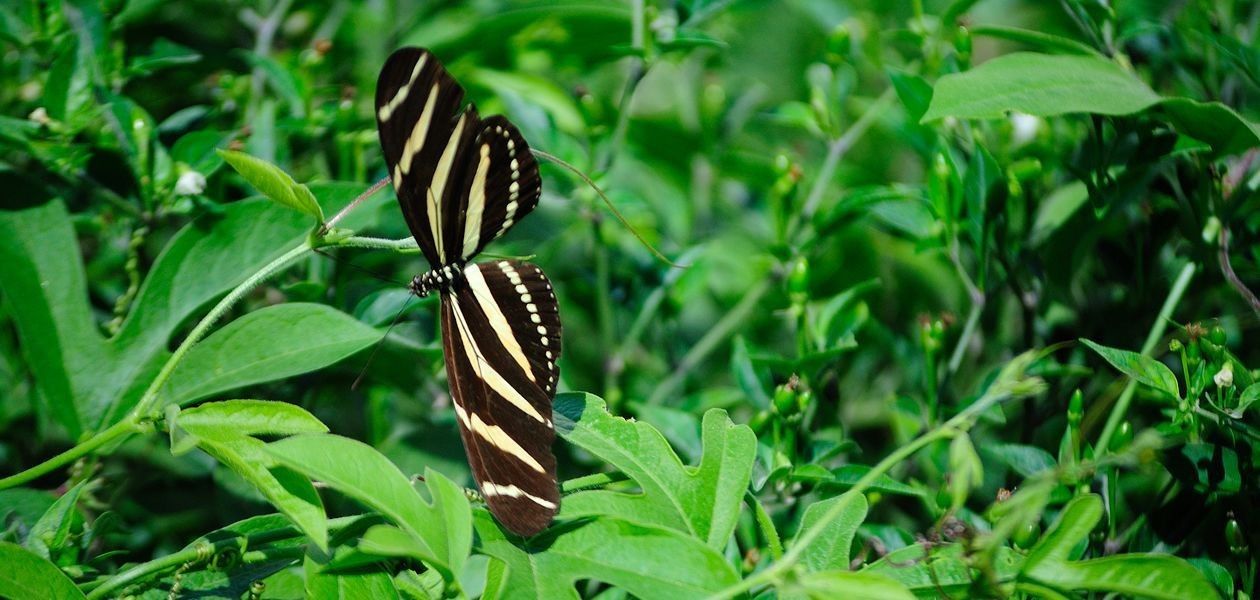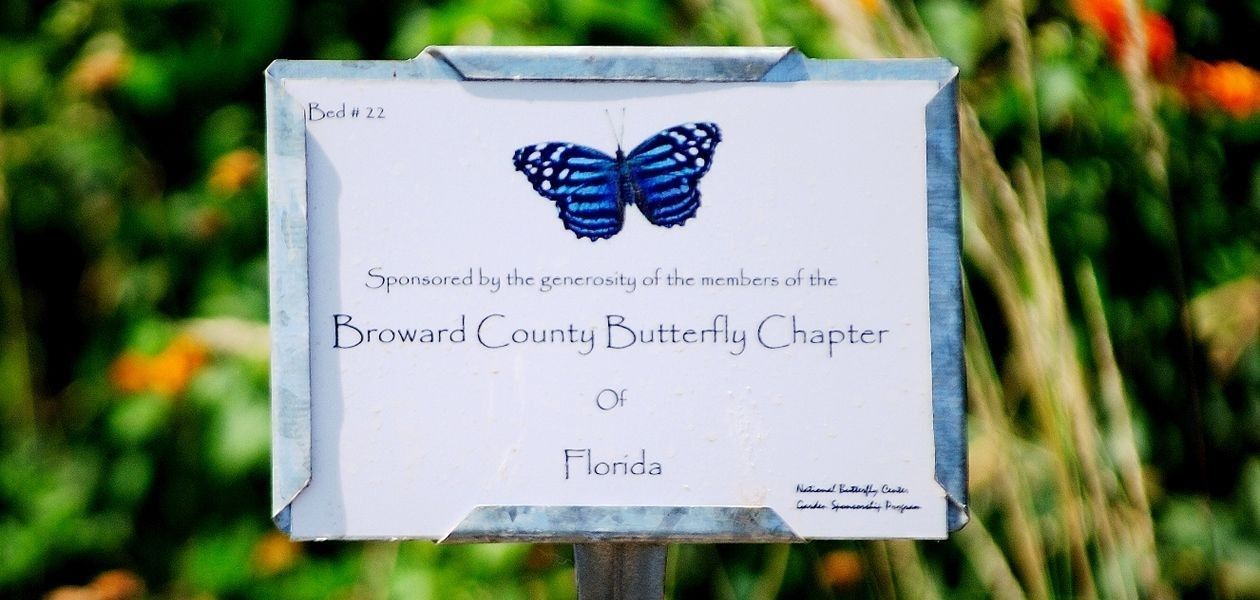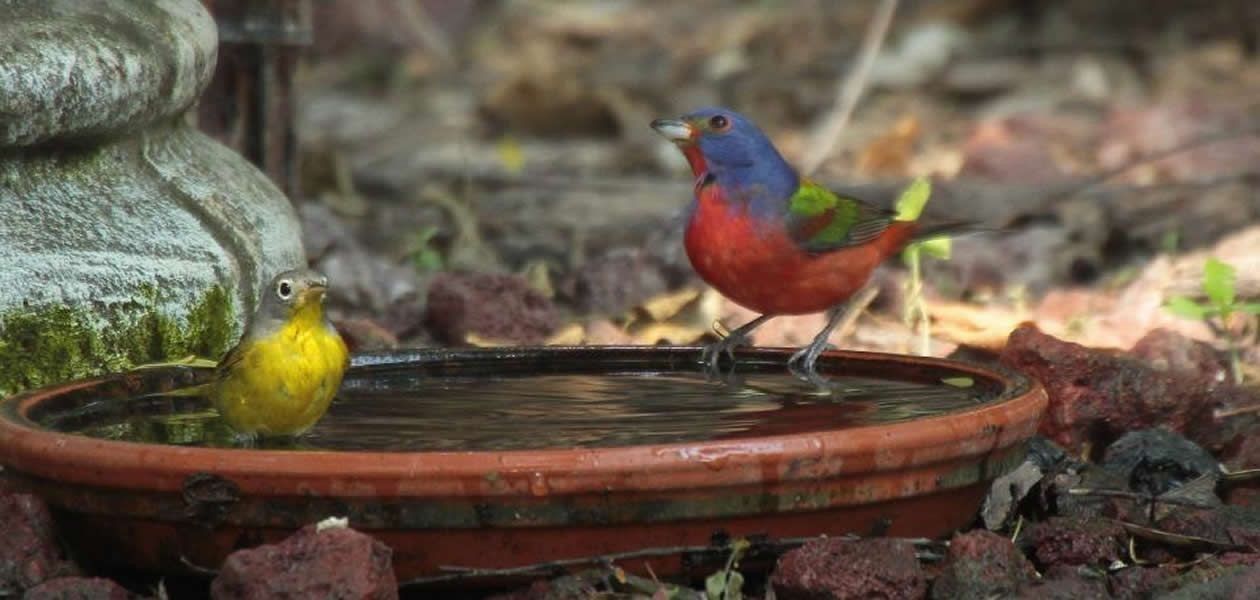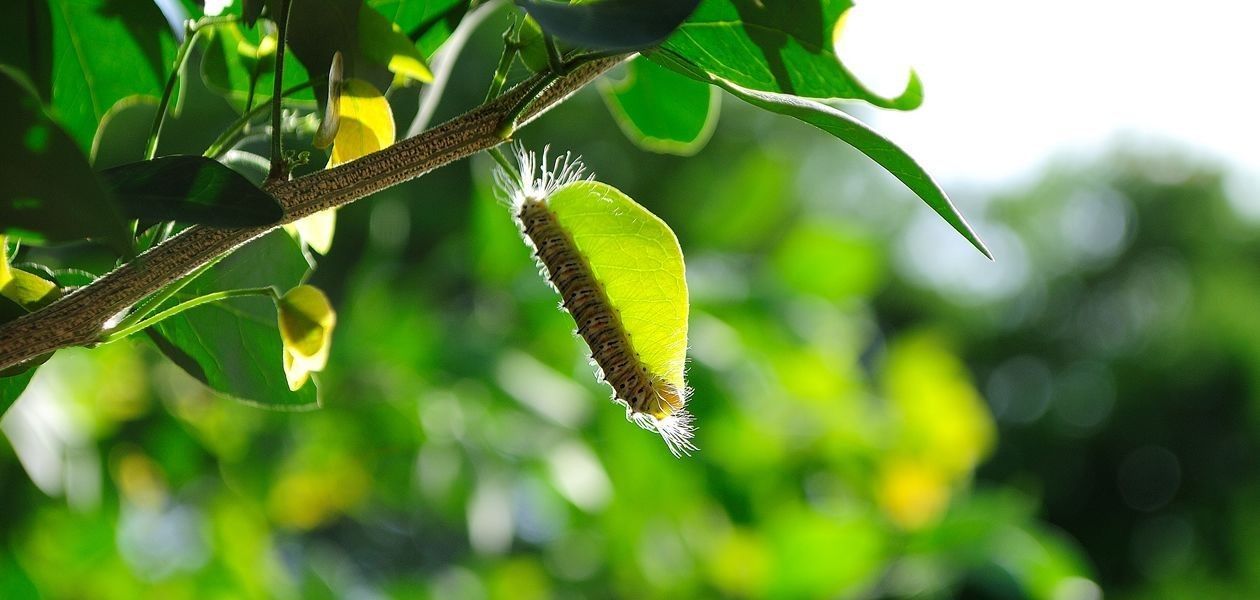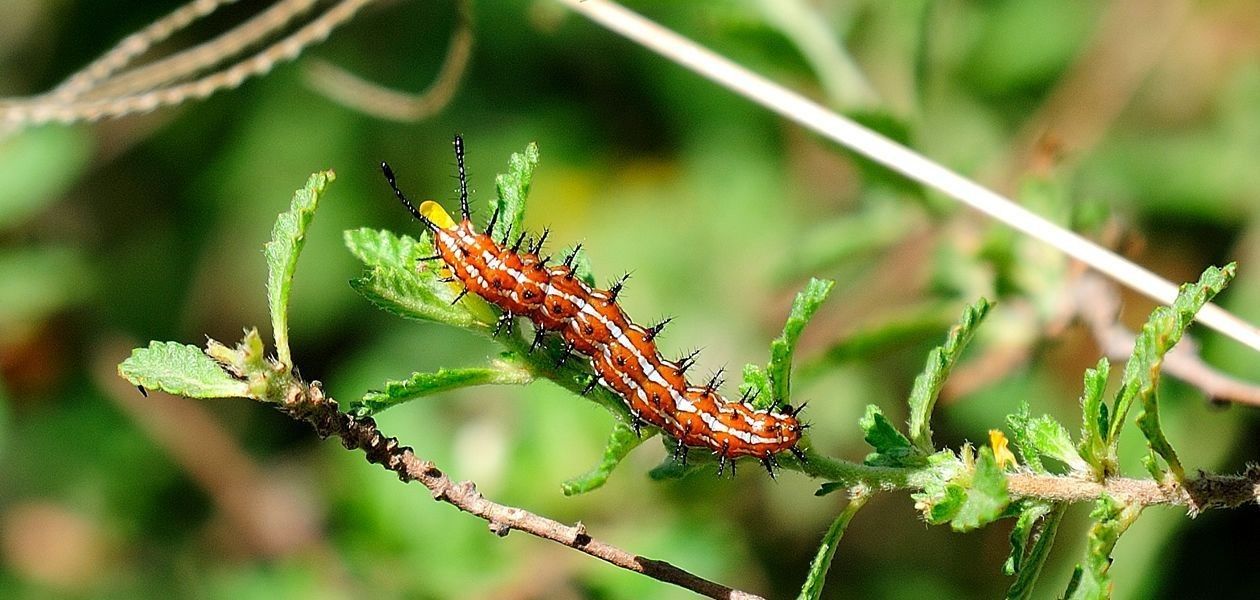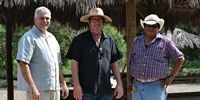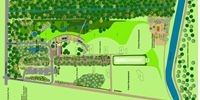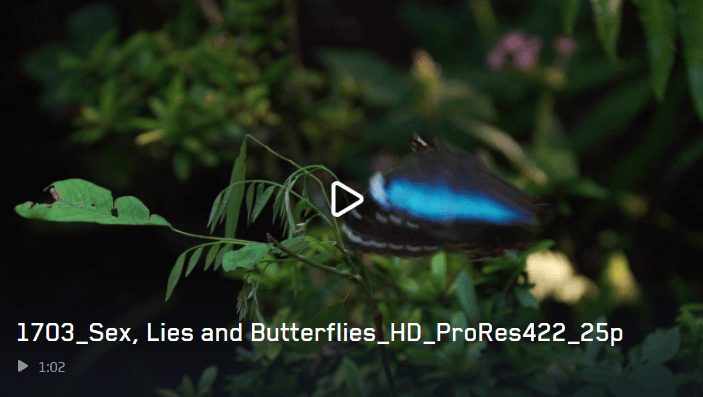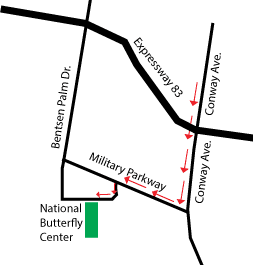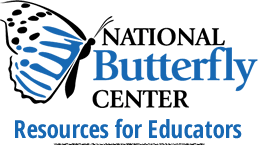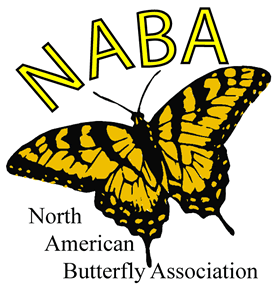
Inside the National Butterfly Center
Just a quick note to say we are grateful for each of you.
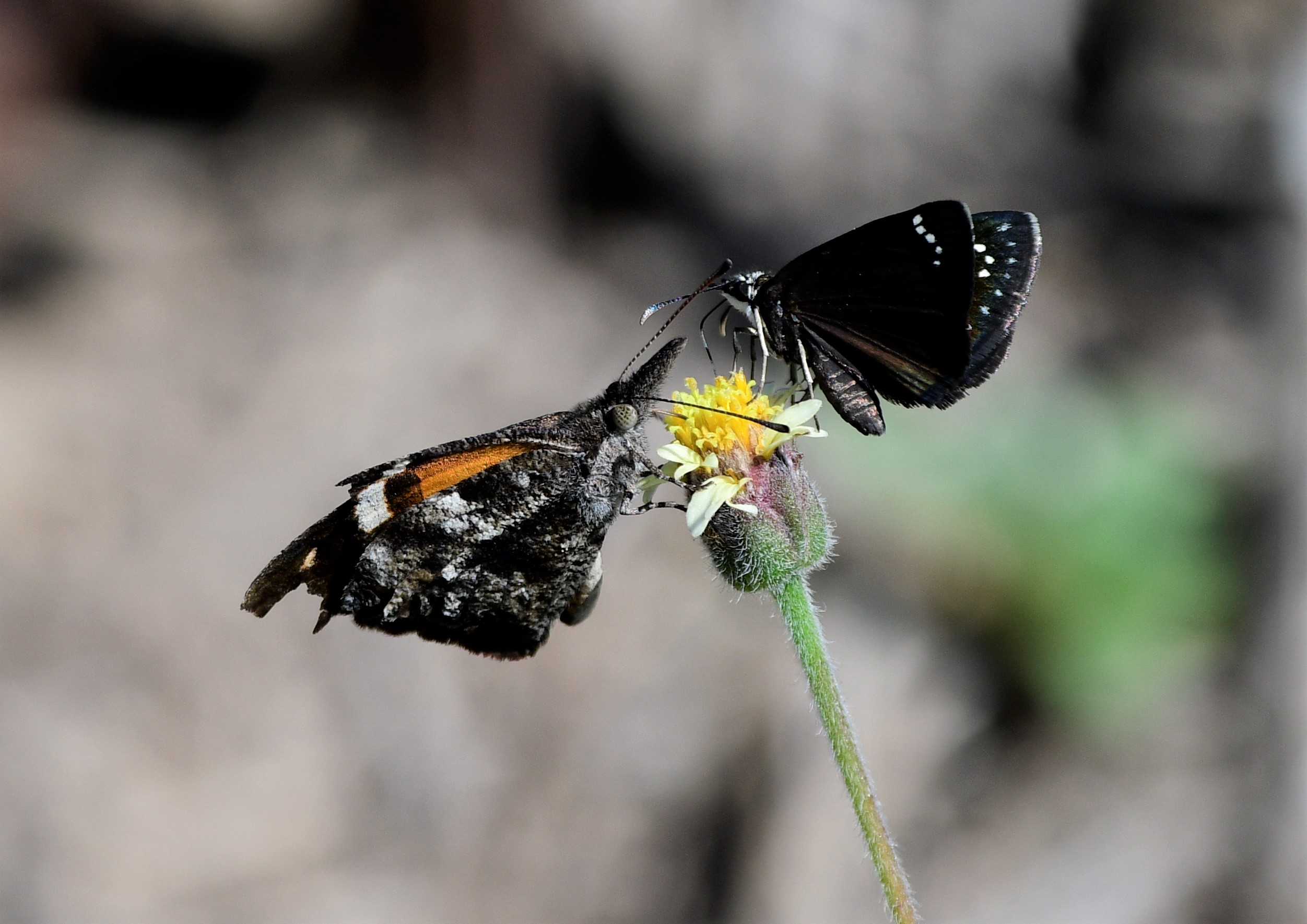
Research Concludes "Summer Abundance" of Monarchs Sufficient to Buffer Winter Declines
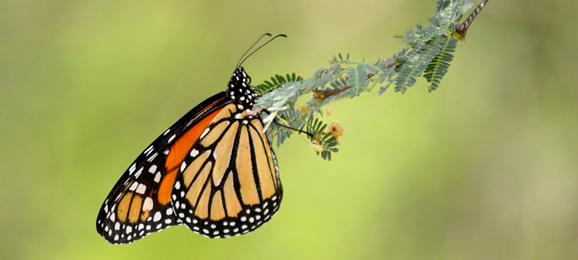
Our parent organization, the North American Butterfly Association (NABA), recently contributed to research and a white paper related to monarch population numbers. See the full report in the PDF, here, and read more below.
Monarchs are the iconic American butterfly species. Concern for the survival of this species, amidst reports of declining numbers, shrinking habitat, environmental toxins and climate change, have spurred public interest in conservation efforts to assist monarchs in their plight. For this we are grateful.
Of the 456 butterfly species tracked by NABA, there are 320 species with trends less positive that monarch butterflies. These findings are consistent with other recent analyses of large-scale insect data, documenting species decline. While we hope individuals, communities and organizations will continue to invest in monarch research, public education and habitat restoration, we encourage everyone to engage with us, their local, native plant society, or nearest NABA Chapter, to plant native for all butterfly species, which depend upon native host plants for reproduction and resilience.
PAPER ABSTRACT: Many insects are in clear decline, with monarch butterflies (Danaus plexippus) drawing particular attention as a flagship species. It is well documented that, among migratory populations, numbers of overwintering monarchs have been falling across several decades, but trends among breeding monarchs are less clear. Here, we compile 135,000 monarch observations between 1993-2018 from the North American Butterfly Association’s annual butterfly count to examine spatiotemporal patterns and potential drivers of adult monarch relative abundance trends across the entire breeding range in eastern and western North America. While the data revealed declines at some sites, particularly the US Northeast and parts of the Midwest, numbers in other areas, notably the US Southeast and Northwest, were unchanged or increasing, yielding a slightly positive overall trend across the species range. Negative impacts of agricultural glyphosate use appeared to be counterbalanced by positive effects of annual temperature, particularly in the US Midwest. Overall, our results suggest that population growth in summer is compensating for losses during the winter and that changing environmental variables have offsetting effects on mortality and/or reproduction. We suggest that density-dependent reproductive compensation when lower numbers arrive each spring is currently able to maintain relatively stable breeding monarch numbers. However, we caution against complacency since accelerating climate change may bring growing threats. Our data also suggest that increases of summer monarchs in some regions, especially in the west and far south, may reflect replacement of migratory with resident populations. Nonetheless, it is perhaps reassuring that ubiquitous downward trends in summer monarch abundance are not evident.
____________________________________________________________________________________________
Wild Bees of the National Butterfly Center
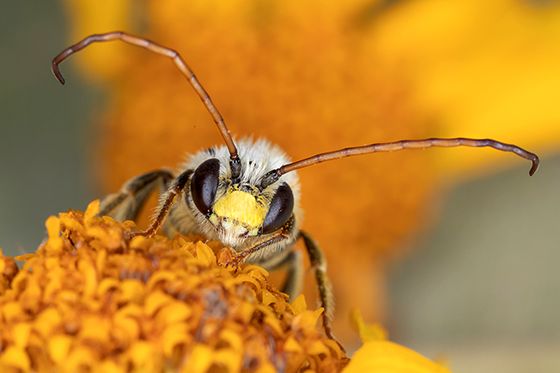
A new research project has revealed that dozens of unique and beautiful native bee species are present at the National Butterfly Center. Many of these are rarely seen within the United States, or are found here only in the Lower Rio Grande Border. One National Butterfly Center species, the red-legged Toluca leafcutter, has never been documented in this country before this year.
The NBC native bee project, conducted by distinguished photojournalists Paula Sharp and Ross Eatman, began in September 2018. Aided by scientists specializing in bees, Sharp and Eatman have now recorded more than 50 NBC native bee species in dazzling photographs, viewable on the website WILD BEES OF THE NATIONAL BUTTERFLY CENTER.
Before arriving at the National Butterfly Center, Paula Sharp and Ross Eatman undertook a three-year project documenting native bee species for New York’s state park system. Sponsored by the New York State Environmental Protection fund, this project culminated in the highly-regarded and well-traveled nature website, Wild Bees of New York, which provides information on more than 120 species of native bees of the Northeastern United States.
Sharp and Eatman’s photographs of wild bees are currently on a national tour of prominent museums, art galleries and botanical gardens. An exhibit of Sharp & Eatman’s bee photographs will be featured by the Houston Museum of Natural Science from May 24 – September 22, 2019.
Sharp and Eatman will be continuing to research and photograph bee species of the National Butterfly Center and the Lower Rio Grande Valley throughout the upcoming year.
HELP SUPPORT A NEW WILD BEE GARDEN AT THE NATIONAL BUTTERFLY CENTER!
PBS' NATURE, Sex, Lies & Butterflies from the National Butterfly Center
The National Butterfly Center, in Mission, Texas, serves as the backdrop for a portion of this insightful documentary of wild butterflies, filmed by Peabody Award-winning cinematographer Ann Johnson Prum, who recently won the Emmy for Best Cinematography in Documentary for her production of Super Hummingbirds, also for PBS' NATURE.
We were privileged and honored to host Prum and Coneflower Studios, last fall, and anxiously await the release of what promises to be a powerful and intriguing examination of the biology and behavior of butterflies that few have ever seen!
Watch the full episode here.
You never know what you'll see at the National Butterfly Center!
Did you know nearly 150 species of North American butterflies can be seen only in the Lower Rio Grande Valley (LRGV) of Texas, or by traveling to Mexico?
In fact, more than 300 species of butterflies may be found in the LRGV, and more than 200 species have been seen at the National Butterfly Center, including a number of rarities and U.S. Records!
Incredibly, almost 40% of the 700+ butterflies that can be found in the United States can be seen in this three-county area at the southernmost tip of Texas, where the subtropical climate makes it possible to enjoy the outdoors year 'round.
Peace, Love, Butterflies
Ten years ago, the North American Butterfly Association broke ground for what has now become the largest native plant botanical garden in the United States. This 100-acre preserve is home to Spike (who thinks he is a butterfly) and the greatest volume and variety of wild, free-flying butterflies in the nation. In fact, USA Today calls the National Butterfly Center, in Mission, Texas, "the butterfly capitol of the USA."

Buy your bumper sticker here.
Experience the National Butterfly Center
A flagship project of the North American Butterfly Association, the NBC is committed to 'Growing Connections' between people, plants, and the winged wonders that pollinate and propagate all that grows around us. We do this through educational and environmental initiatives that cultivate meaningful understanding of the parties and processes that create beneficial and sustainable ecosystems.
The Center showcases live animals and plants, in wild and cultivated settings, with educational exhibits to enhance human understanding and appreciation. This large-scale project is designed to ensure our beautiful landscape and the wildlife we take for granted will be here for future generations to enjoy. In addition to the ever-growing gardens and trails, the Center now boasts an impressive, new Visitor's Pavilion, designed by Wendy Evans Joseph, principal architect of the Holocaust Museum in Washington, DC, and the Women's Museum in Dallas, Texas.
Located in Mission, Texas, near the Rio Grande River, and only 15 minutes from a major airport in McAllen, The Center is open to the public, for visitors and members, seven days/week.
Hours of Operation
Open 7 Days a Week
8:00 - 5:00
364 Days / Year
Closed Easter Sunday
Come See Us
National Butterfly Center
3333 Butterfly Park Drive
Mission, TX 78572
956-583-5400
GPS Coordinates:
26.180243 -98.364973
